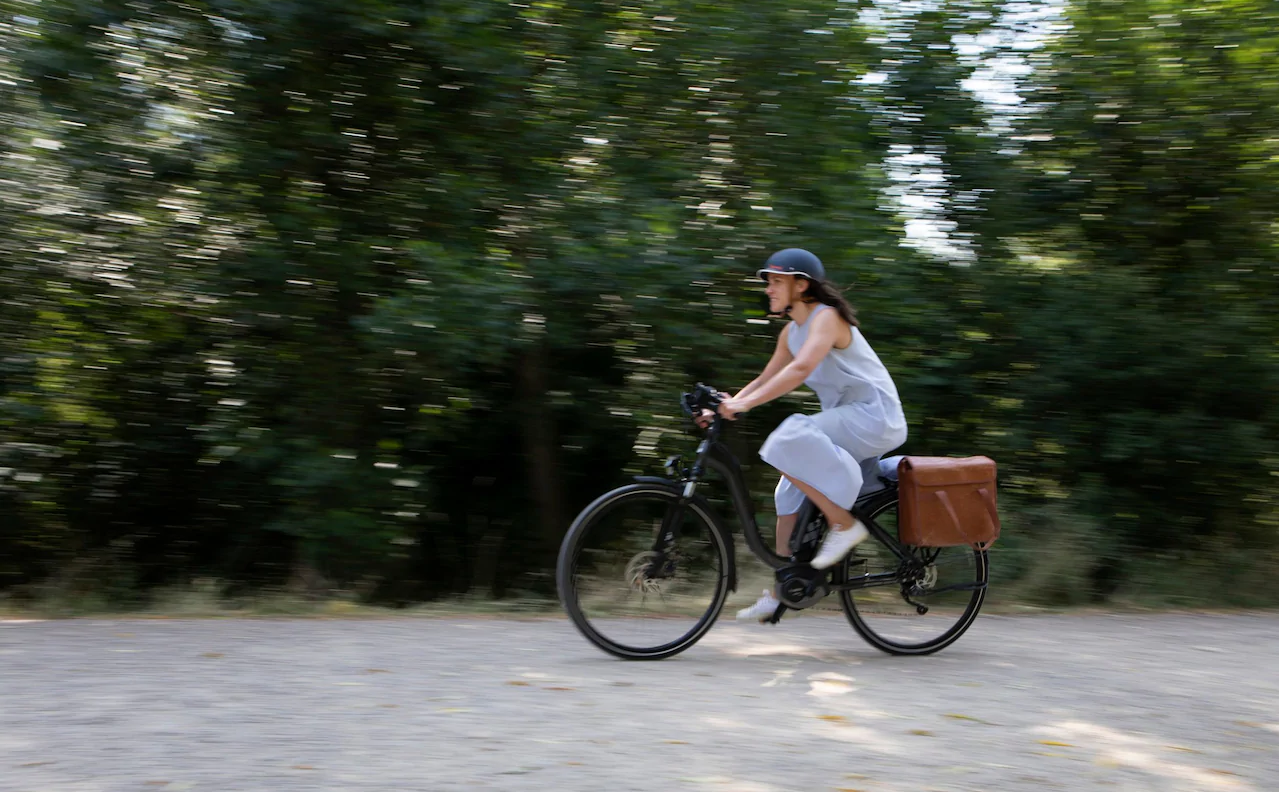Can you really get fit on an e-Bike?
With power-assisted cycling on the rise, Jessica Salter gears up to find out why Credit: Rii Schroer
It's that time of year when spurred on by watching the world's top cyclists conquer French mountains, we all fancy heading out on a leisurely cycle. But here's a question that will leave Mamils (middle-aged men in Lycra) choking on their energy gels: can you get fit on a bike with a battery? As the delivery man who lugs my new Raleigh e-bike inside my house (all 25kg of it) says when I tell him the weight is largely due to the motor: "It's cheating, isn't it?"
He's not the only one who thinks so. But let's be clear: this isn't riding a moped. Yes, there's a motor, but it's pedal-assisted, meaning you still have to move your feet. "[E-bikes] are a nice combination of using your own human power and having a bit of assistance too," Sir Chris Hoy has said.
"And once you've ridden an e-bike, you completely get it." If an Olympian says they're OK, shouldn't we all jump aboard?
There is no denying pedelecs (to give them their proper name) are part of a growing trend, especially on the Continent: 45 per cent of all new bikes in Belgium and 30 per cent of those in Holland last year were e-bikes. In the UK, we're finally catching on: Halfords reported a 220 per cent sales increase in electric bikes last year. Sales are weighted heavily in favour of the silver cyclist: Halfords say that 65 per cent of their e-bikes are sold to people over 55.
Saddle up: Jessica Salter with a Raleigh Grand Tour bike, £2,150, raleigh.co.uk; Thousand helmet, £85, cyclechic.co.uk; Bobbin straw pannier, £55, velovixen.com Credit: Rii Schroer
Sir Chris is right: as soon as you hop on an e-bike you realise what fun they are. I was a regular cyclist, but fell out of the habit. But when my aptly named Raleigh Grand Tour showed up at my door for a test ride, a sleek gunmetal machine with a battery pack attached to the seat post and an electronic display on the handlebars, getting back into it was like... well, you know.
Except so much better. I set off late for a meeting, but, turning up the motor and pedalling as fast as I could, I arrived on time, and not, as I used to, a sweaty mess. The motor is capped at a top speed of 15.5mph, but you can go quicker if you pedal harder.
It's so much fun, it doesn't really feel like fitness. So is it? Well, yes. A recent Norwegian study found that e-bike riders exert almost as much effort as regular cyclists when going around the same track. Researchers found that e-bikers were 8.5 times more active than they were at rest, while those using traditional bicycles were 10.9 times more active - a smaller difference than had been anticipated. The regular cyclists utilised 58 per cent of their lung capacity, compared with the e-bikers' 51 per cent. The only significant difference? The e-bikers were 21 per cent faster.
And according to Norwegian and Dutch studies, you could get fitter than you would on a regular bike because e-bikes encourage you to go further than you might otherwise. Which makes sense when you try one - suddenly a meeting 10 miles away seems like nothing, even uphill. "E-bikes give people the confidence to explore more, rather than be exhausted after 20 minutes and go home," says Dave Hull, owner of North Pennines Electric Bike Hire (and an e-bike convert himself). "Before you know it, you've done 50 miles and been out for hours." I certainly found that. On a day when I would have got the bus to meetings, I managed to clock up 40 miles.
Joe Goodwill, 57, author of the Electric Bike Blog, says it infuriates him when people say riding an electric bike is cheating. "The point is that you cycle more often because it is less physically challenging, particularly when you live in hilly communities, and all the while you are getting exercise," he says. Which is a bonus if you don't feel confident about your fitness. Research by Transport for London shows that more than a fifth of people who don't cycle are put off because they think they aren't fit enough.
If there is a downside, it's that e-bikes can be expensive: roughly between £750 and £2,000. But there are initiatives to help shoulder the cost - the Cycle to Work scheme (national) and TfL (London) offer subsidies. Plus if you want to try before you buy, e-bike holidays are gaining popularity. Hull says his customers return to do ever-longer rides, such as the 136-mile coast to coast across the Pennines: "Many of them never thought they could do that kind of challenge. It totally amazes them."



